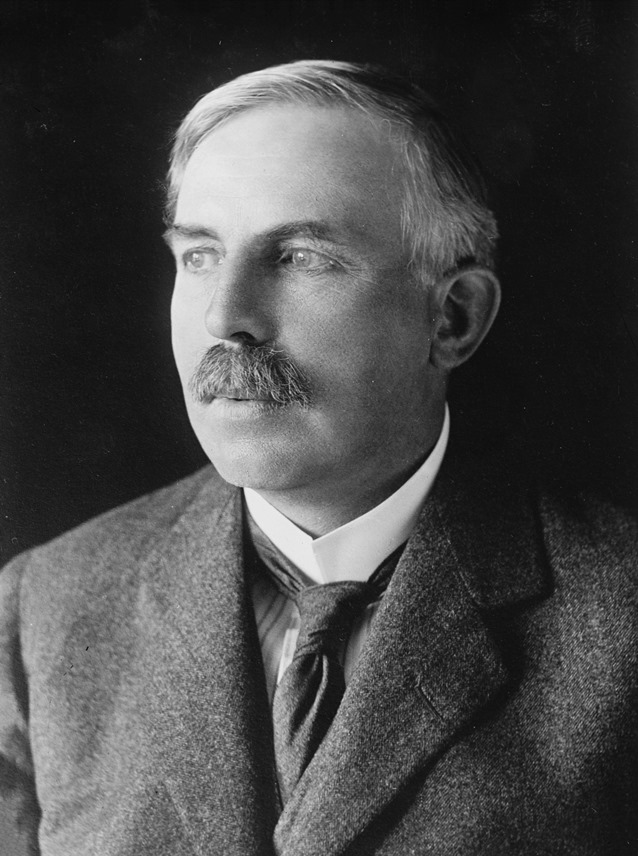Inside the Nucleus

(1871 - 1937)
Ernest Rutherford is considered the founder of nuclear physics, and the title is well deserved. In addition to proposing the very concept of an atomic nucleus, Rutherford also made important discoveries about the structures of atomic nuclei.
The first bit of evidence about the structure of the nucleus came from Rutherford’s earliest experiments with alpha particles, even before the nucleus itself was discovered. Rutherford noticed that an alpha particle has exactly the same mass as a helium ion—an atom of helium with its electrons removed. This could hardly be a coincidence, Rutherford thought. Perhaps alpha particles just are helium ions!
With the help of his colleague Thomas Royds, Rutherford conducted an experiment to test this hypothesis. Since alpha particles can pass through thin materials, Rutherford and Royds were able to trap a large number of alpha particles inside an otherwise empty vacuum tube, by letting the particles pass through a thin part of the glass. They then used high-voltage electrical terminals to send a stream of electrons through the tube. The positively-charged alpha particles grabbed hold of the negatively-charged electrons, turning themselves into electrically neutral helium atoms. When Rutherford and Royds analyzed the contents of the tube, sure enough, they found helium gas! The electrical current through the helium gas caused the gas to glow, emitting light with the identifiable spectral lines of helium. (We’ll learn about spectral lines later in this chapter.) For more details on this Nobel-Prize-winning discovery, here’s Rutherford’s 1908 Nobel Lecture “The Chemical Nature of the Alpha Particles from Radioactive Substances.” Since alpha particles come from the decay of elements like uranium and radium, this experiment showed that the positively-charged parts of helium atoms are somehow contained within the atoms of many radioactive elements. Later, when the atomic nucleus was discovered in the Geiger-Marsden experiment, Rutherford concluded that the nuclei of radioactive elements contain particles identical to helium nuclei.
A few years later, after the discovery of the nucleus, Rutherford made another important discovery. When alpha particles passed through nitrogen gas, hydrogen atoms were created! This could not be the result of any chemical reaction, he reasoned, because hydrogen and nitrogen are chemical elements. In other words, hydrogen and nitrogen are two different types of atoms. Chemical reactions involve combinations of atoms, but no new types of atoms can be created in a chemical reaction. So how were the hydrogen atoms produced? Rutherford concluded that fast-moving alpha particles were colliding with the nuclei of nitrogen atoms, and the debris from these collisions consisted at least partly of hydrogen nuclei. In other words, either the alpha particles or the nitrogen atoms—or both—contained particles identical to the nucleus of a hydrogen atom!
In light of these discoveries, Rutherford hypothesized that all atomic nuclei are comprised of the same positively-charged particles, which he called protons. Since hydrogen atoms are the smallest and lightest of all atoms, Rutherford correctly inferred that hydrogen atoms contain a single proton, while heavier elements contain more than one proton. Other experiments revealed that most kinds of atoms also contain particles nearly identical to protons in mass, but with no electric charge. Rutherford called these uncharged particles neutrons.